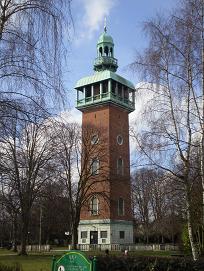How to get a War Memorial Listed
 What are the benefits of listing?
What are the benefits of listing?
The War Memorials Project is keen to see more war memorials included in the National Heritage List for England. Listing highlights a building or structure’s architectural or historical value, and ensures that this is taken into account if and when any changes to the memorial and its surroundings might be considered. Any significant changes that are to be made to a listed building require listed building consent. It is a criminal offence to alter a listed building without listed building consent.
For more information, visit Historic England’s website about Listing.
Memorials within ecclesiastical buildings
Many memorials are associated with churches. A separate system of control exists
for alterations to fabric or fittings relating to ecclesiastical buildings. For more information, see
this article on the subject.
Who can apply to get a war memorial listed?
Anyone can nominate a war memorial for listing. You may wish to refer to the Historic England selection guide for Commemorative Structures. This states that, “Unless compromised by alteration or of little design interest, there is a presumption in favour of listing all war memorials.” You should also consult Historic England guidance ‘Listing War Memorials in England: a guide for volunteers’. There is now an online listing application form.
What information do you need to fill in the application?
A nomination for Listing is more likely to be successful if you can provide evidence of the memorial’s historical or artistic merit. This now includes its significance to today’s community. In many cases our archive is ideal for extracting supporting evidence for a nomination, as our records contain interesting historical information and references. You can use our main database through this website or contact the project to find out what information we hold on a particular memorial to support an application, which might include historical plans, surveys, or architectural information.
You will also need to include good quality colour photographs of the structure as it stands today. We may also be able to help you locate historical photographs as well.
How do I find out if a war memorial is already Listed?
You can check the listing status of a war memorial by searching through the National Heritage List for England or alternatively you can use the database on our website to search for the memorial in question. In one of the information boxes towards the bottom of the record will be a reference to its Listing Status. This will contain the Grade, if the monument is already listed. If the box is empty, the memorial is currently not known to be Listed. This means that a plaque inside a Grade II* listed church, for example, will say Grade II* on the record for that memorial.
For war memorials inside, attached to or within the curtilage of buildings, the Listing Status of the principal building normally applies. There are examples, however, of separately listed structures in the grounds of listed buildings.
Most of the war memorials that are currently listed are freestanding, external structures. This does not mean that other types of war memorial cannot be nominated for Listing. The War Memorials Project would like to see a greater variety of forms given the recognition and protection afforded by Listing, and we can advise you on applications relating to other types if you are considering making a nomination.
What happens when a war memorial is accepted for Listing?
The war memorial will be assigned a grade (most of those currently listed in Leicestershire are Grade II) and the local authorities are notified by Historic England. The National Heritage List for England is the register of all listings.
Listed war memorials are recorded on Leicestershire’s Historic Environment Record (HER). For more information on the HER, and how to see these records online via English Heritage’s Heritage Gateway, please refer to our webpages on the Historic Environment Record.
Further information on listing war memorials
The War Memorials Trust also encourage the listing of war memorials. You can see their web pages and helpsheet on listing on their website.
